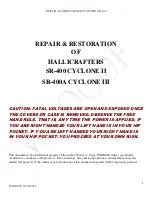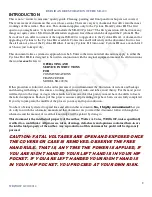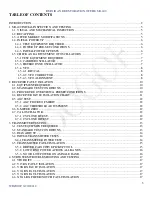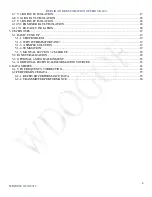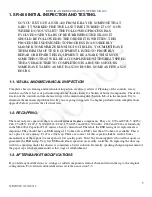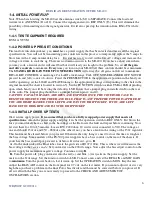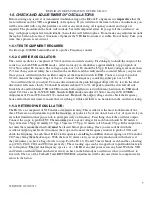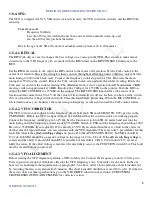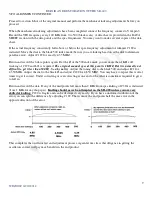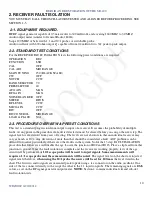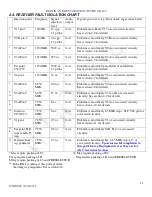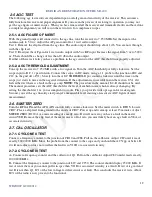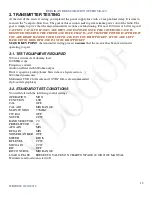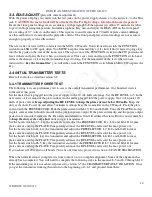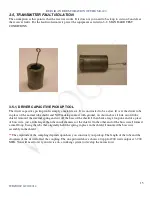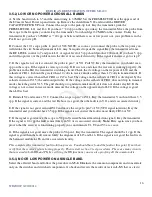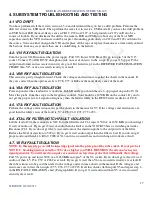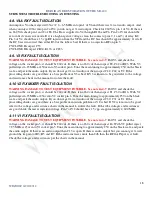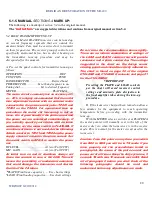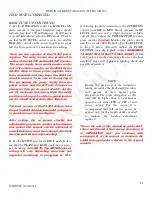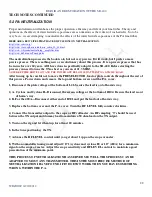
REPAIR AND RESTORATION OF THE SR-400
7
WDØGOF 6/22/20014
1-5. CHECK AND ADJUSTMENT OF OSCILLATORS:
Before starting any receiver or transmitter troubleshooting or the RF or I.F. alignment it is
imperative
that the
xtal oscillators and the VFO are
precisely
on frequency. If you will devote the time to these considerations you
will be rewarded with a rig that performs as well as any modern rig. A frequency counter and scope are
required. The procedure in the book will work ok, but will compound errors. If you get all the oscillators “on
freq” with proper output levels individually, then all else will fall into place. Do not make any adjustments until
the rig has been on for at least 30 minutes. Optimize the VFO
last
to insure it is stable. Do not hurry. Take your
time, these processes are critical.
1-5-1 TEST EQUIPMENT REQUIRED
Oscilloscope, 100MHz bandwidth and two probes, Frequency counter.
1-5-2. CARRIER OSCILLATOR:
The carrier oscillator is comprised of V14A and its associated circuitry. First thing is to check the output of the
carrier osc in both USB and LSB modes. After warm up you should have approximately 6 vpp on pin 8 of
V9A. Now adjust T4 for max. The voltage on pin 4 or 3 of T4 should be
8 Vpp. If these voltages are more than
15% low then you most likely have a fault in the oscillator and this fault must be corrected before you proceed.
Once you are satisfied with the oscillator output set the function switch to USB. Connect a scope to pin 8 of
V9A to monitor the output voltage of the osc. Connect the frequency counter to either pin 4 or 3 of T4.
You will find that if you adjust T4 in one direction from the peak the signal drops off very fast. In the other
direction it falls more slowly. T4 should be adjusted about 2% to 5% off peak toward the slow fall off side.
Switch back and forth from USB to LSB to insure both oscillators start without any hesitation. In USB mode
adjust C139 for exactly 1652.800 KHz. Switch to LSB mode and adjust C136 for exactly 1650.000 KHz.
Adjustment of T4 and C136 and C139 can interact. Re-check the output voltage and re-check the frequency
back and forth several times to insure that everything is stable and there is no hesitation in the oscillator startup.
1-5-3. HETERODYNE OSCILLATOR:
The Het Osc is comprised of V12 and its associated circuitry. This oscillator is the most troublesome of the
three. There are no adjustments to pull the frequency of each xtal. So if you do not have a box of spare xtals you
are rather limited in what you can do to put it precisely on frequency. First thing, check the oscillator output.
Connect the scope to pin 8 of V2. The minimum peak to peak voltages for each band should be: 80 meters 4
Vpp, 40 meters 4 Vpp, 20 meters 2.5 Vpp, 15 meters 2.5 Vpp, 10 meters (all 4 bands) 2 Vpp.
If the output does
not meet these minimums this fault
must
be cleared before proceeding. Once you are satisfied with the
oscillator output signal levels, disconnect the scope and connect the frequency counter to pin 8 of V2A and
check the frequency on each band. If the xtal frequencies are
all
high or
all
low then swapping out C104 and/or
C105 may bring them back in spec. With the four 10 meter xtals you are pretty much stuck with where ever
they are unless you have a bag of xtals to swap. For the 80, 40, 20 and 15 meter bands, each band has a loading
cap (C103, C102, C101 and C100 respectively). These loading caps can be swapped out to pull individual xtals
on to frequency. The end unit frequency spec is + or – 3 KHz at any dial point across any band. With the VFO
and Carrier oscillators dead on whatever error you have in the heterodyne oscillator is what you will have to
live with. The use of the CAL ADJ and RIT CONTROL adjustments will be discussed later to compensate for
errors in the het osc.

